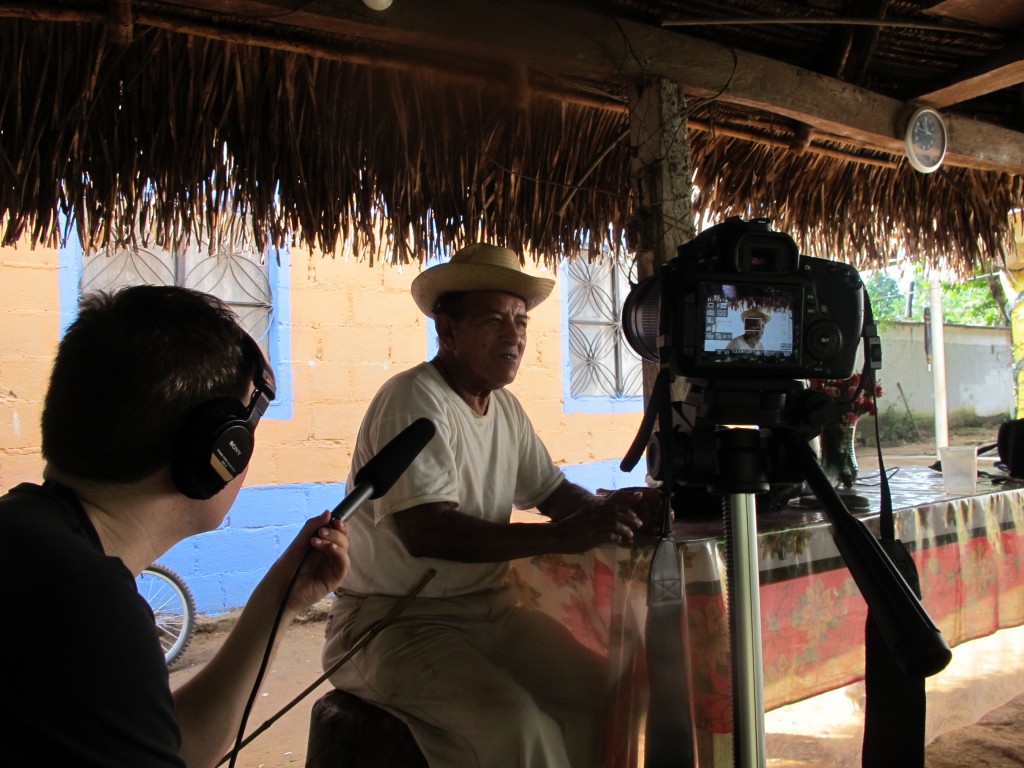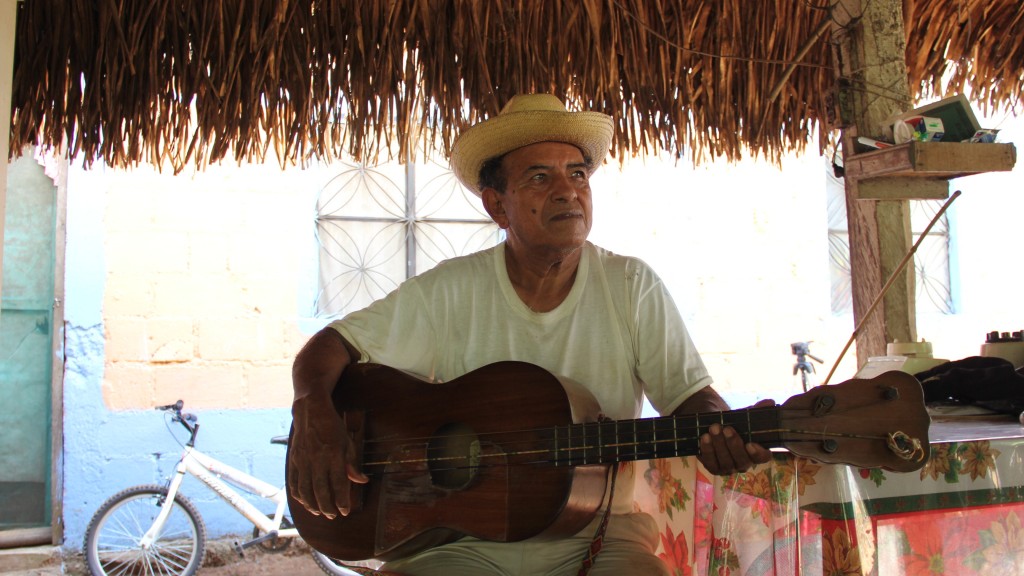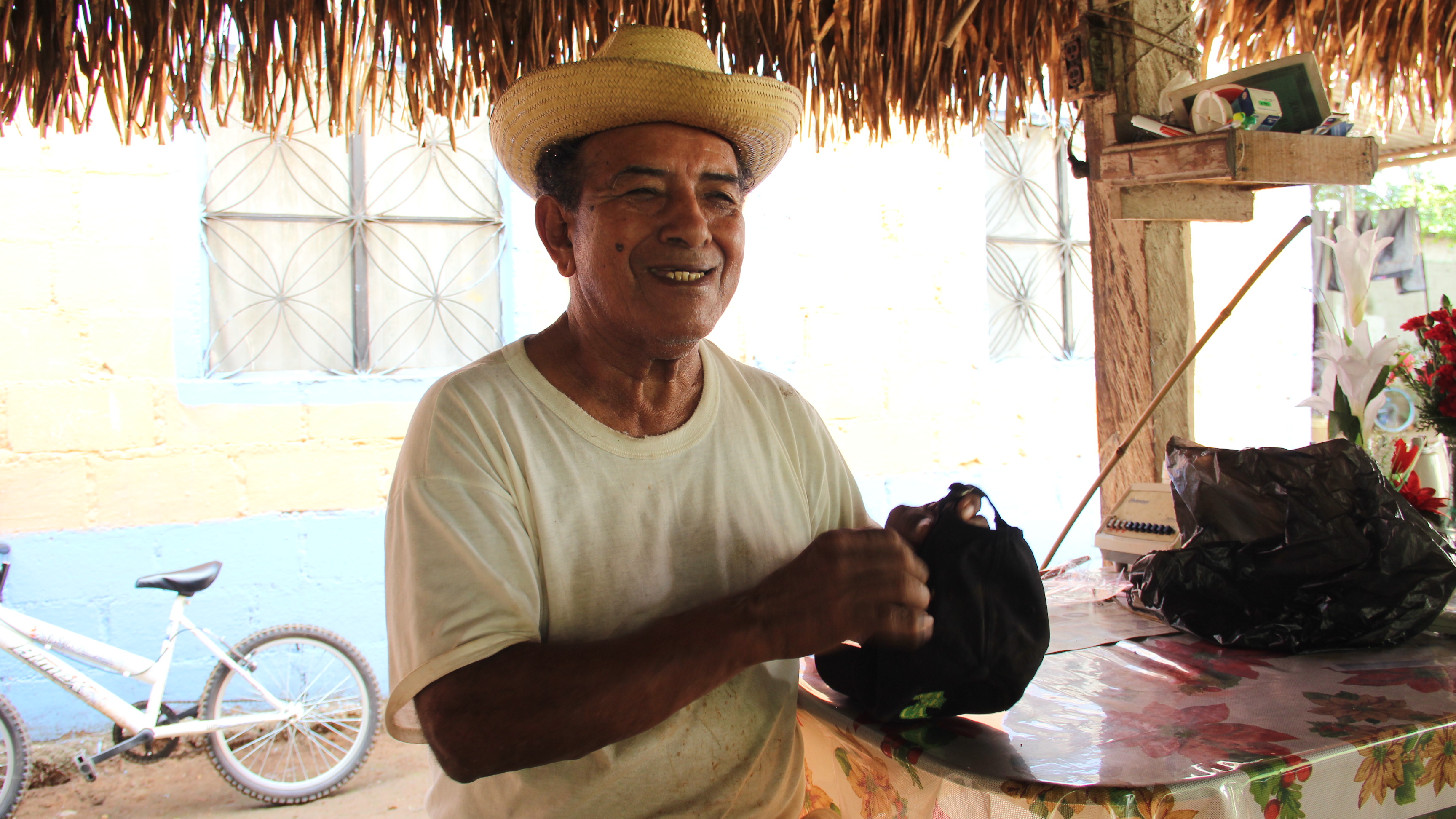Don Delio lives at the end of a dirt driveway populated by chickens and small children in Chacalapa, a rural community in Southern Veracruz. His skin is dark and freckled and he sports a head of tight grey curls. His frame is broad and strong despite his 80 years, and he speaks in long eloquent sentences that unfurl themselves slowly.
We came to visit Don Delio because, basically, we wanted to meet some old people. Thanks to workshops of son jarocho revivalist groups like Mono Blanco and Los Cojolites, it’s not hard to find young people playing son jarocho in the towns of Southern Veracruz – everywhere you look there seems to be a kid carrying a jarana, the traditional jarocho guitar. But what you don’t see very much of at the concerts and fandangos are musicians from the previous generation, the living links between the music’s storied past and its current revival. In part, that's because there aren’t a whole lot of them left. The story I kept hearing in Veracruz is that there was basically a generation gap – the kids of today play son jarocho, but most of their parents didn’t. And many of their grandparents have passed on.

So, we wanted to hear a little bit about the way things were, and that’s how we ended up chatting with Don Delio in his yard about
son jarocho in the good old days. Delio has been playing at fandangos in the region back since you had to arrive on horseback – if you were lucky enough not to have to walk. His instrument is the
leona, the purring bass instrument played in Southern Veracruz. The
leona said to come from Black communities in the region, and while I haven’t seen much documentation proving it, its highly syncopated, almost funky basslines seem to support the claim.
In fact, Chacalapa is one of those communities, historically home to a large number of Afro-Mexicans said to have long ago been enslaved on sugar plantations in the region. Delio, whose real name is Lucas Morales Vidal, grew up toiling in cane fields under the yoke of his strict grandfather, cutting cane until late in the night. But Delio always had a taste for music, and learned to play the jarocho insturments at the local fandangos, as the communal jam session/dance parties of son jarocho are known.

“Everything used to be more calm. This was a tiny village then. There weren’t as many electronic devices as there are now. You could hear the fandangos from far away,” says Delio. On the weekends, a local shop-owner would throw fandangos, in order to motivate the sales of liquor and snacks. Delio became an in-demand player there, as well as at festivals and weddings around the region, which always ended with a fandango.
I asked Delio about the differences in son jarocho between then and now. Some of the were musical: you used to hear the cajón played at the fandangos, but no longer. The strings were made of pig gut. “There are many songs that are getting buried,” says Delio. “People play the same six songs these days. You rarely hear anybody do ‘La Poblana’, for example.”
Most of his stories, however, had to do with all the stuff around the music. The way men would escort women to the fandango, arm-in-arm. The way the women would dress so modestly, you couldn’t even see their ankles (try to imagine wearing all that cloth in the sweltering Veracruz heat). The way you’d have to stay up playing till dawn if you went to a fandango in another town, because it was too dark to find your way home. The way people spent more time socializing back then – it wasn’t just one song after the other like it is today.

“They used to say that
jaraneros were all drunken perverts. Some people would get involved with music, and get lost in drink. But the fandango was a decent environment, much more decent than the dances. You go to a dance and you see people who barely know each other dancing close – you don’t see that at a fandango,” says Delio. “Back then, people were raised differently.”
Delio still plays now and again when he’s invited to an event, but he doesn’t get out as much as he used to. But he’s become a reference for players from the new generation, a source of information on the musical and cultural aspects of jarocho tradition. We were brought to him, for example, by Benito Cortes from Los Cojolites, who nodded respectfully throughout our conversation, occasionally smiling hugely, enraptured by the little details from Delio’s stories. Last weekend in New York, I met the leonero from visiting jarocho group Los Vega, who said he has spent many long, lazy afternoons studying leona with Delio.
Delio seems to enjoy the attention, and he’s really happy to see a new generation of musicians who are taking jarocho music so seriously. “It’s so great it’s going forward like this,” he says. But he also says the traditions are more precarious than you might think. “In a lot of towns, it’s already gone. I was in a town the other day which used to be famous for having great musicians. There’s all gone, nobody is left. The musicians died and they didn’t pass their music on.”












